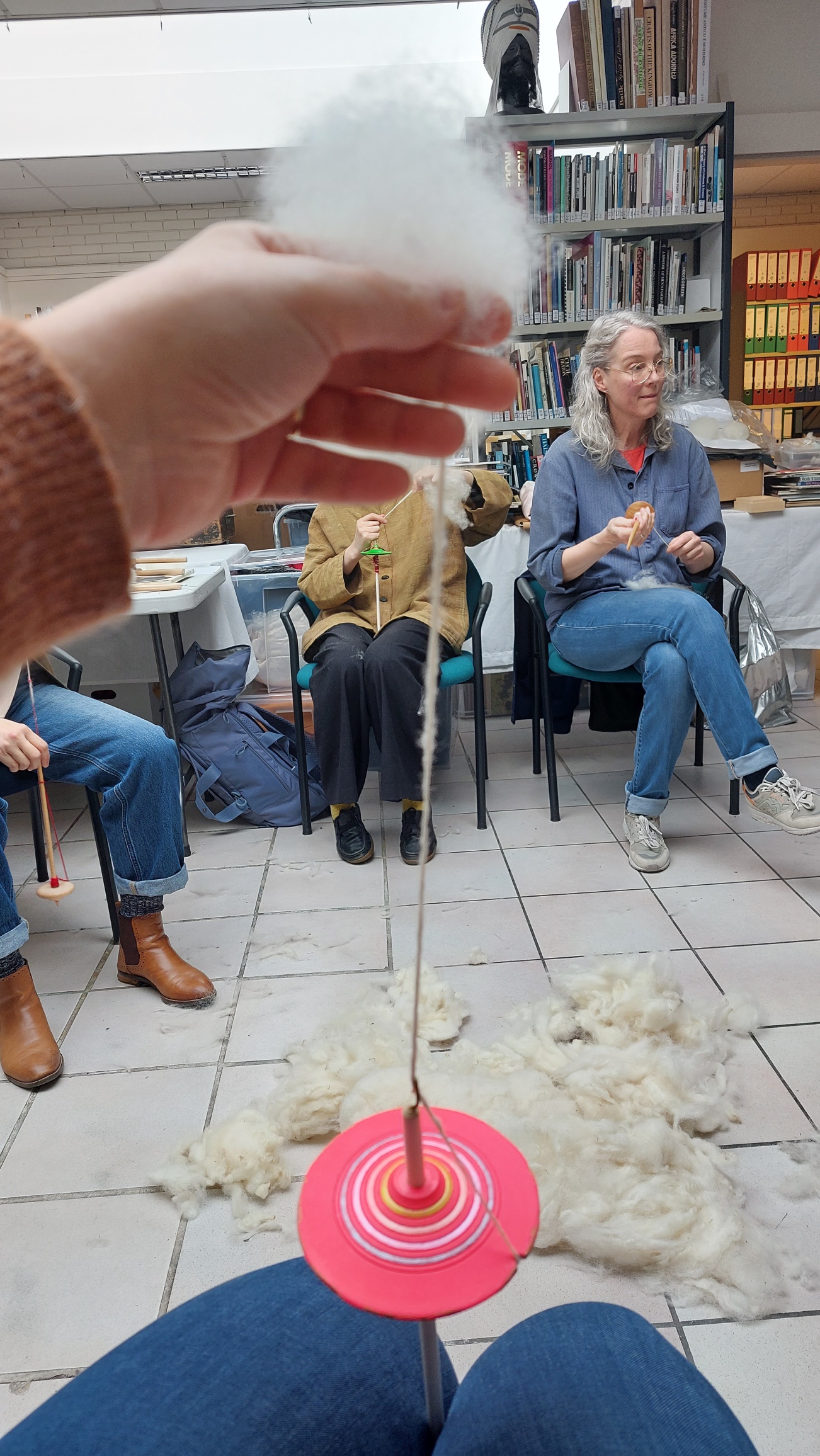 Studyday: What is a thread. TRC, 15 March 2024.by Gillian Vogelsang-Eastwood, Director TRC, 17 April 2024
Studyday: What is a thread. TRC, 15 March 2024.by Gillian Vogelsang-Eastwood, Director TRC, 17 April 2024
We have recently had three very different groups visiting and working at the TRC Leiden. How enjoyable it was to talk about various forms of textiles and to listen to what people could tell us.
The first group consisted of students from the Royal Academy of Art in The Hague, who are studying a variety of textile-related subjects including design, interior design and textiles in general. The group included students with very diverse cultural and ethnic backgrounds. There were some lively discussions about cultural appropriation, return of artefacts, role of museums, handling of objects, symbolism and textile designs.
What struck me most was the enthusiasm and understanding of the subject by the students with multiple cultural experiences. What all of the participants enjoyed, however, was opening boxes with objects from the TRC collection and physically handle textiles from around the world.
I am looking forward to hearing more from the students and learn what they gained and how they turned the newly acquired information into practice.
The second group was there for the study day ‘What is a thread?’ There were eight people present, some of whom had considerable experience with spinning, others with no experience at all.
The day started with looking at various natural fibres and their properties and then we went on to the theory of fibres (natural, artificial, synthetic, metallic, etc); at the TRC we strongly feel that if you do not understand the initial composition of cotton or wool then you will not understand how and why the fibres react when turned into a thread.
Part of the day was also spent learning about various forms of preparation and spinning of wool (worsted and woollen forms). The final part of the day was based on identifying different types of threads (s, z, I, plied, combinations, etc) and how to identify and describe them. The samples got progressively more and more complex!
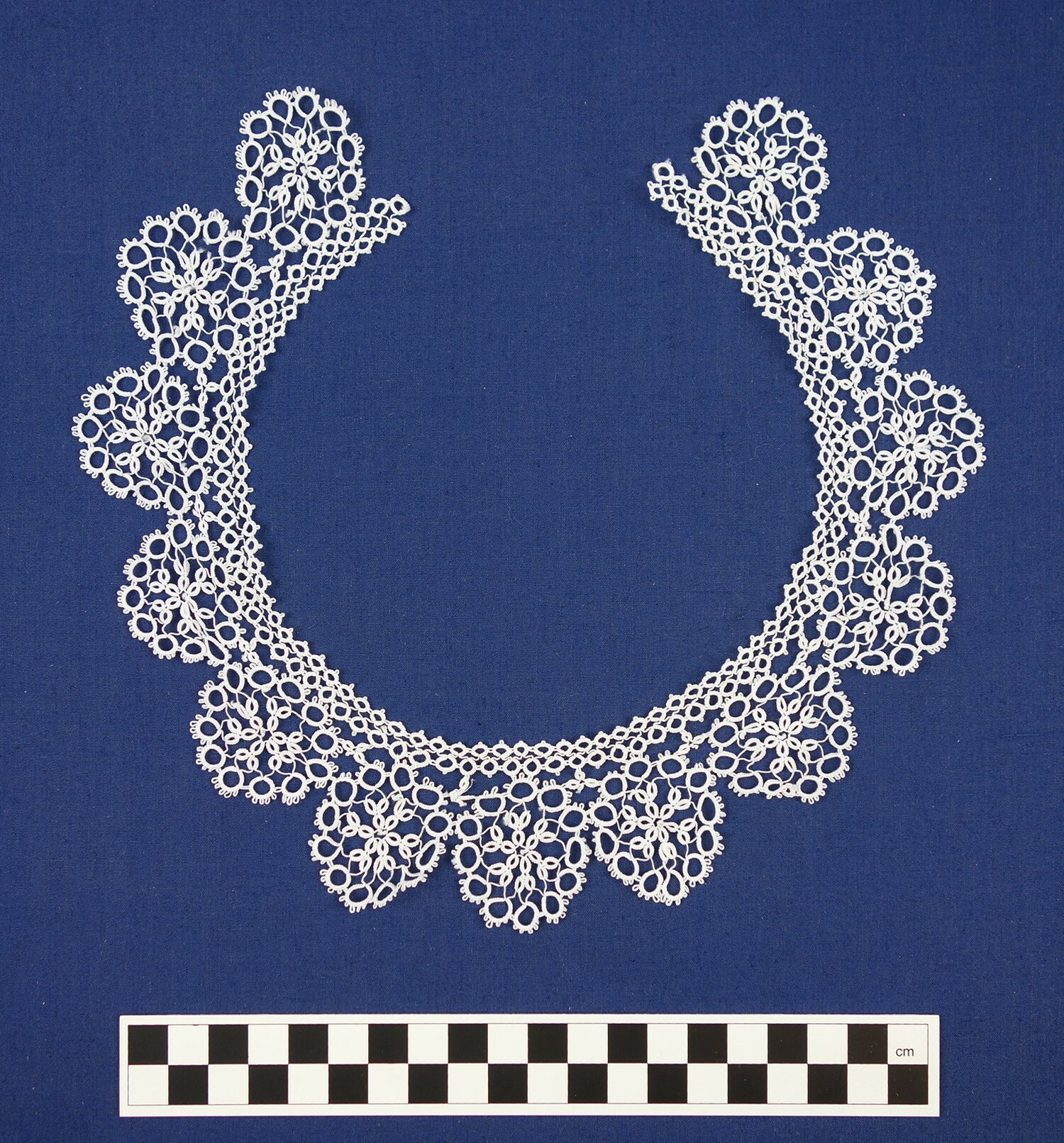 Tatted lace collar, Europe, 20th century (TRC 2016.2431).
Tatted lace collar, Europe, 20th century (TRC 2016.2431).
And the third group were people learning and discussing the technique of tatting (frivolité), which is a form of looped lace, created either with shuttles or special needles to make the loops. What they really wanted, and that is why they came to the TRC, was to see a wide variety of tatting examples, based on thread types (that subject again!), sizes, colour combinations, complexity of patterns, etc. And more specifically, the group wanted to be able to handle examples and record different patterns and uses. The tatting day was organised by Katja van der Steen and here are her comments that she sent us after the group's visit:
There is a saying in Russian: "It is better to see once than to hear 100 times" and I am glad that TRC provides such a unique opportunity to learn through hands-on approach. High-resolution imagery in the museums is usually outsourced to professional photographers, who indeed can capture the details, but do not have a sense of what is really important for the maker. That's why I strongly believe that the only way to really understand how something is made is to see with your own eyes and feel with your own hands.
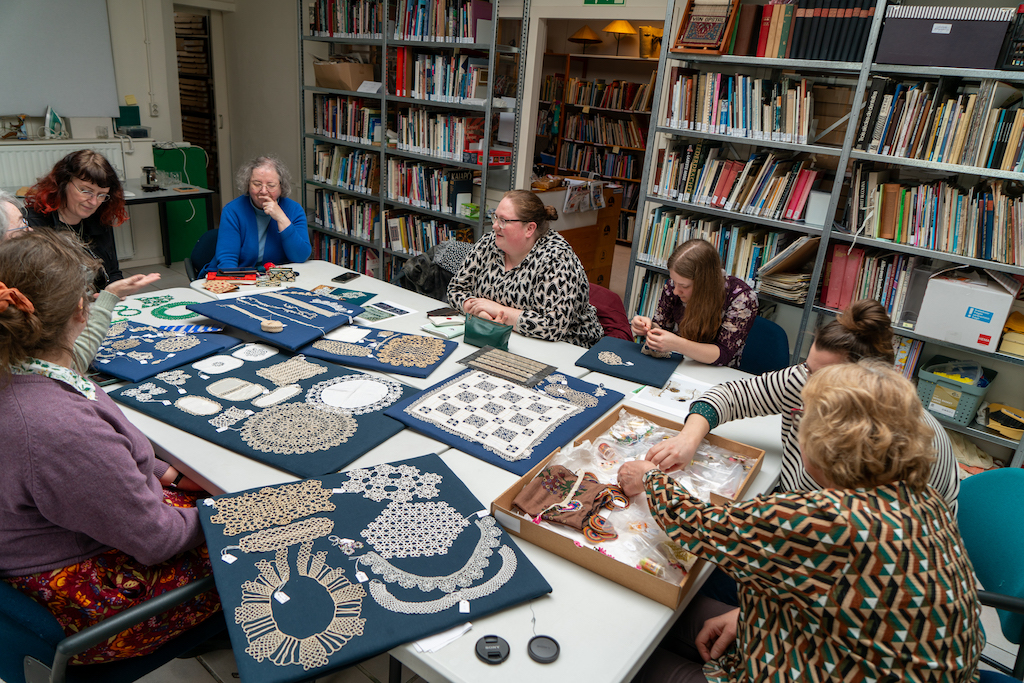 Meeting of the tatting group at the TRC, April 2024.
Meeting of the tatting group at the TRC, April 2024.
And I am really excited to have seen that the participants also felt the same: the comments on how surprised they were about the texture of the lace, how the threads felt, how the shuttles sat in their hands are priceless. It was a visit that brought everything they have learnt before together and it was a joy to see a-ha moments and excited eyes when they recognised the patterns, or how "the penny dropped" when they saw how some technique was done in the past.
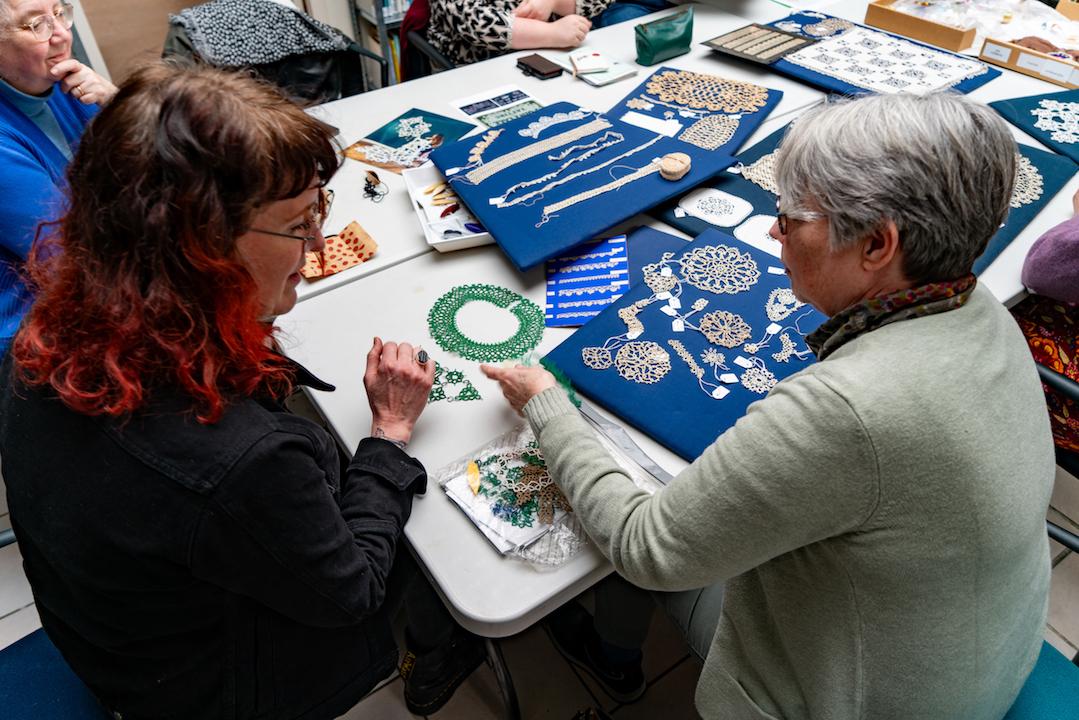 Tatting meeting at the TRC, April 2024.
Tatting meeting at the TRC, April 2024.
One of the students said that it was a very special experience, as suddenly she felt that she was a part of something bigger. Here we are in Leiden in the 21st century, with our brand-new 3d shuttles, looking at techniques which were used by women like us 300 years ago. This is mindblowing.
And what is also important for me is to let people see that they are not isolated, that what they are passionate about is not an "old granny's hobby", that there are more textile enthusiasts like them. Saturday new friendships were built that people will cherish forever.
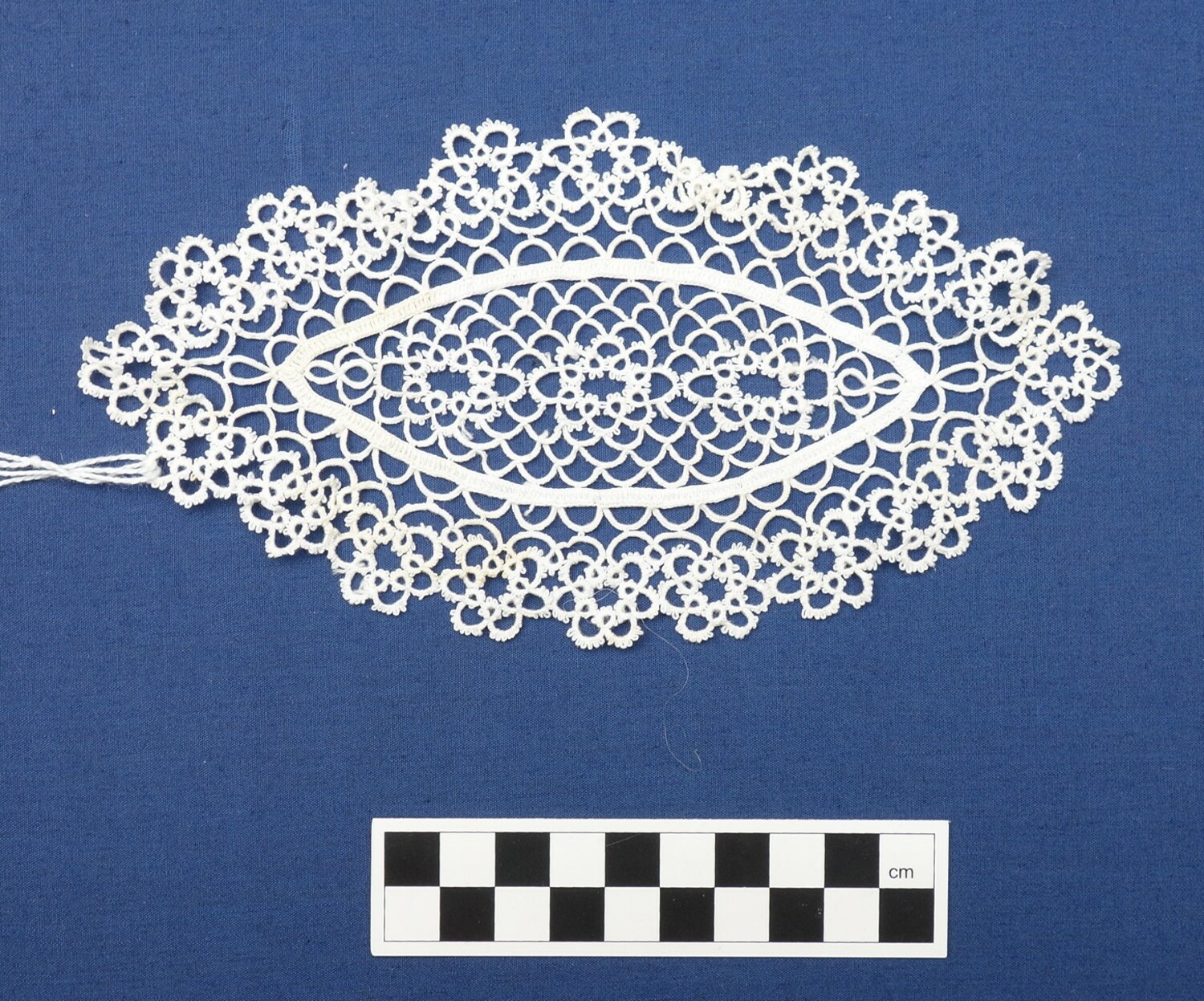
So, thank you so much to be able to have such an important experience!
What did these diverse groups have in common? Simply, an interest ( in some cases bordering on obsession) in textiles. These meetings are important to the TRC, not only to 'give' information, access to the collection, etc., but also to 'absorb' the sometimes priceless knowledge that our visitors are happy to share, and we are more than willing to listen to them and include their knowledge into our blogs, databases and other forms of communication. No knowledge should ever go wasted!
More details about the TRC workshops, study days and courses can be found in the TRC agenda. The next study day in the series ‘What is ….’ takes place on 10 May: What is a weave? Let us know if you want to join: This email address is being protected from spambots. You need JavaScript enabled to view it.
If you would like to organize a group visit to the TRC, to talk with us or to see a specil group of objects, please contact us at This email address is being protected from spambots. You need JavaScript enabled to view it.. Please be aware that the basic cost for a group visit for up to two hours (max. people) is 175 euros (including tea, coffee, biscuits), but further costs may be involved depending on the size of the group, length of visit and subject to be discussed.










